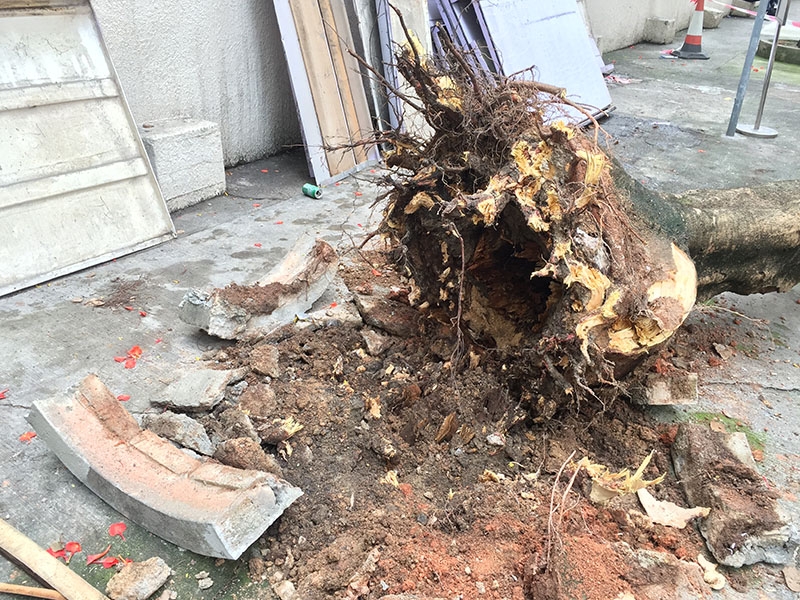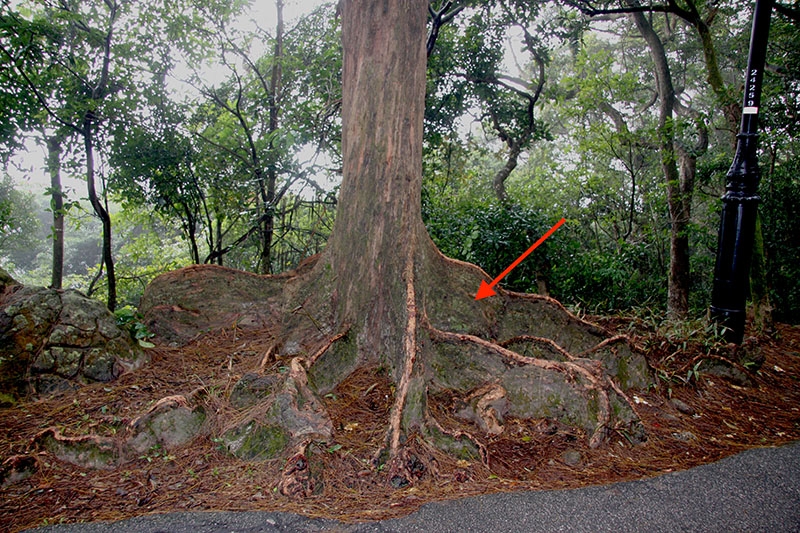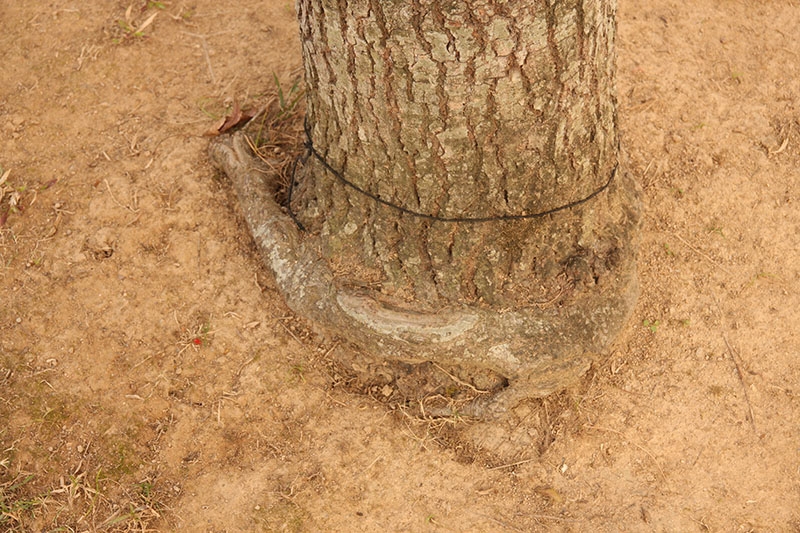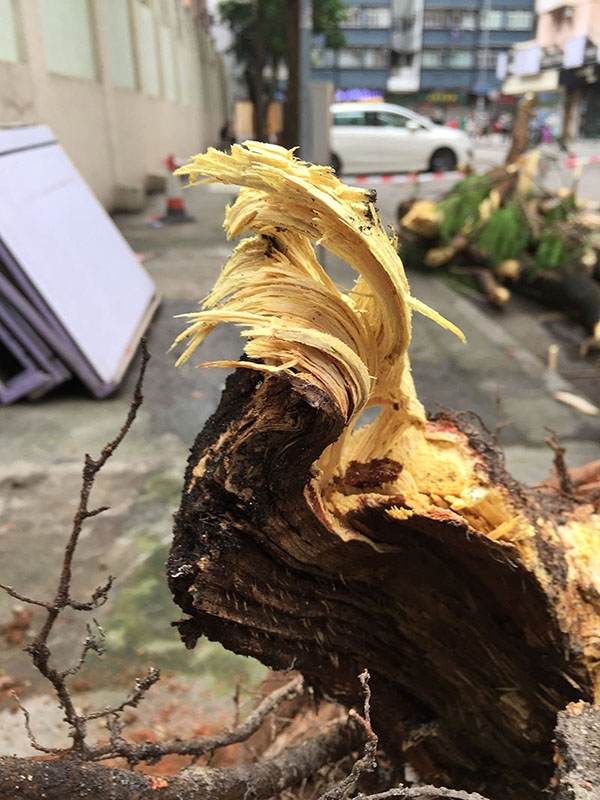On 9th May 2019, a 12m tall Flame Tree (Delonix regia) failed in a car park area within a private estate in Hung Hom, which injured a pedestrian. By our on visit observations, there was a large central cavity at the broken section and some roots could also be found growing around the tree trunk (Photo 1). What was the major reason for a tree with that many roots yet still failed? To answer this question, we have to revisit the knowledge about the roots of trees.

The “root” of tree survival
Tree crown, trunk and roots are the major organs of trees. As the foundation of a tree, roots provide support and anchorage to all trees. In addition, roots are responsible for absorption, conduction and storage for the trees.
Roots usually grow from the root collar (or root flare), which is the transition from the tree trunk to the roots. Buttress roots on the other hand develop in some tree species in response to an external force (Photo 2). The root flare connects the roots for absorption to the trunk and further up to the crown, which is also critical to the health of the tree. So, roots play a key role on both health and structural support as well as the overall survival of the tree.

From the roots to the heart of wood
Roots growing underground can be easily ignored from various kinds of damages. Different types of root being damaged will have different impacts to a tree. For example, if the fine absorption roots are being damaged, water and nutrient absorption will be affected (Photo 3). Whenever the number of damaged roots increases, the negative impact to the tree will also become more serious.

The roots of roadside trees are prone to be damaged by road works such as excavation. If some main roots close to the trunk are being cut, those lateral roots derived from and associated with these main roots would usually be removed at the same time.
In addition, wood decay fungi can enter the tree from the wound of the cut roots and extend the decay to the trunk. Likely, an internal decay tunnel will be developed and gradually reduces the support of the entire tree. Since internal decay cannot be discovered from the outside, in most cases the decay can only be found after the tree had failed.
“Bend” for survival
Limited growing space for roots can also cause serious problems. For example, roots will not have enough space to grow when given a limited soil volume. Limited soil volume also restricts the supply of air, water and nutrients to a tree. If the situation persists, roots will die and the whole tree will fail eventually.
Under normal circumstances, roots should be developed radially to establish a supporting system, so as to tackle external forces from different directions. However, when trees are being planted in a very limited space, such as planters or close to the curbs, roots will change their growing directions accordingly and may bend, girdle or eventually become girdling roots (Photo 4). Since girdling roots cannot radiate outward, the anchorage to the tree will be reduced, thus prone to suffer from windthrow. Girdling roots embedded into the trunk can also disrupt the vascular system for water and nutrient transportation.

The root cause
With further understanding about the functions and importance of roots, we can try to figure out the cause for the tree failure case in Hung Hom. Firstly, the more obvious problem was the large internal decay tunnel, which significantly reduced the support to the trunk and root flare.
Secondly, there were many broken roots in relative small diameters (Photo 5), which had no decay but were indeed bending. These bending or girdling roots were growing under the influence of the small round-shaped planter structure as well as the concrete covered soil surface. A tree 12m high, with roots compromised by the limited growing environment, accompanied by strong winds as the catalyst may very well be the reason for the failure.

Addressing the importance of root development
Roots are “hidden” underground and not many people have sufficient understanding and care about them. Roots are always being ignored but we now know the importance of root development to a tree’s survival and safety. It is time for us to review our current tree management practices in order to provide sufficient care and protection regarding roots of urban trees.

